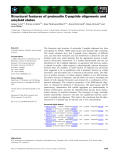
Salt dynamics
-
The main aims of this research are: To determine the phase inversion temperatures for the formation of oil-in-brine nanoemulsions at various salt concentrations using conductivity measurements; To prepare the nano-emulsions at PIT points, and study their stability by measuring their droplet size, polydispersity and size distribution using dynamic light scattering technique; To confirm the DLS results using Cryo-SEM technique;...
 324p
324p  runthenight07
runthenight07
 01-03-2023
01-03-2023
 11
11
 4
4
 Download
Download
-
This study focuses on the stability of nano-emulsions produced by phase inversion temperature method using n-Decane and n-Dodecane as the dispersed phase and pure water/brine as the aqueous phase (continuous phase). A non-ionic surfactant (Brij 30) was used in the preparation of the nano-emulsions. Three different types salt namely \(NaCl\), \(KCl\) and \(MgC{l_2}\) were used at different concentrations.
 173p
173p  runthenight07
runthenight07
 01-03-2023
01-03-2023
 12
12
 3
3
 Download
Download
-
The goal of this study is to demonstrate and quantify the impact that the uncertainty in thermophysical properties has on key metrics of thermal hydraulic importance for MSRs, in particular on the heat transfer coefficient. In order to achieve this, computational fluid dynamics (CFD) simulations using the RANS k-ω SST model were compared to published experiment data on molten salt.
 13p
13p  christabelhuynh
christabelhuynh
 29-05-2020
29-05-2020
 22
22
 1
1
 Download
Download
-
Use of poor quality water for agriculture production requires appropriate management strategies such as leaching of excessive salts, selection of salt tolerant crops, frequent application of water etc. Thus a field experiment was conducted at CCS Haryana Agricultural University, Hisar to study the salt dynamics in soil under drip irrigation system on cabbage crop and to investigate the effect of frequency and salinity levels of irrigation water on cabbage.
 10p
10p  nguaconbaynhay5
nguaconbaynhay5
 16-05-2020
16-05-2020
 23
23
 2
2
 Download
Download
-
The formation and structure of proinsulin C-peptide oligomers has been investigated by PAGE, NMR spectroscopy and dynamic light scattering. The results obtained show that C-peptide forms oligomers of different sizes, and that their formation and size distribution is altered by salt and divalent metal ions, which indicates that the aggregation process is medi-ated by electrostatic interactions.
 10p
10p  viettel02
viettel02
 19-02-2013
19-02-2013
 42
42
 3
3
 Download
Download
CHỦ ĐỀ BẠN MUỐN TÌM


















